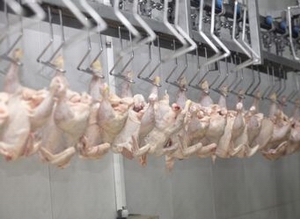 eatingplace is publishing an interview series with Brian Ronholm, new Acting Under Secretary of Food Safety at the U.S. Department of Agriculture. The interview focuses on the proposed poultry slaughter program known as HIMP, or HACCP-based Inspection Model Program.
eatingplace is publishing an interview series with Brian Ronholm, new Acting Under Secretary of Food Safety at the U.S. Department of Agriculture. The interview focuses on the proposed poultry slaughter program known as HIMP, or HACCP-based Inspection Model Program.Implementing HIMP would mean that chicken evisceration line speeds would increase from 140 birds per minute to 175, and some USDA inspectors would be moved off the inspection line to perform other duties involved in safety verification, according to USDA officials.
In the interview, Ronholm said that the goal of HIMP is to rearrange inspectors to focus on tasks that improve food safety from a scientific perspective. Because microbial contaminants such as Salmonella and Campylobacter are invisible to the naked eye, it makes more sense to take some inspectors off the line and have them focus on verifying that slaughter plants’ food safety systems are in working order, Ronholm said.
That said, inspectors working under HIMP would be looking for fecal contamination earlier in the production chain than they currently are. In non-HIMP plants, Ronholm said, inspectors only stop the line for fecal contamination at the chilling stage.
While some inspectors have argued against the new processes laid out by HIMP, Ronholm said that others approve.
USDA officials say that fecal material appears in HIMP plants about half as often as today’s standard plant. Ronholm added that HIMP inspectors catch “infectious conditions” on 4 out of every 100 million carcasses, and visible fecal contamination on 9 out of every 100 million carcasses.
Under HIMP, each evisceration line will still be required to have one inspector available to catch signs of food safety defects, such as septicemia, toxemia or fecal material.
The White House has indicated April 2014 as the target for issuing a final rule on HIMP.





